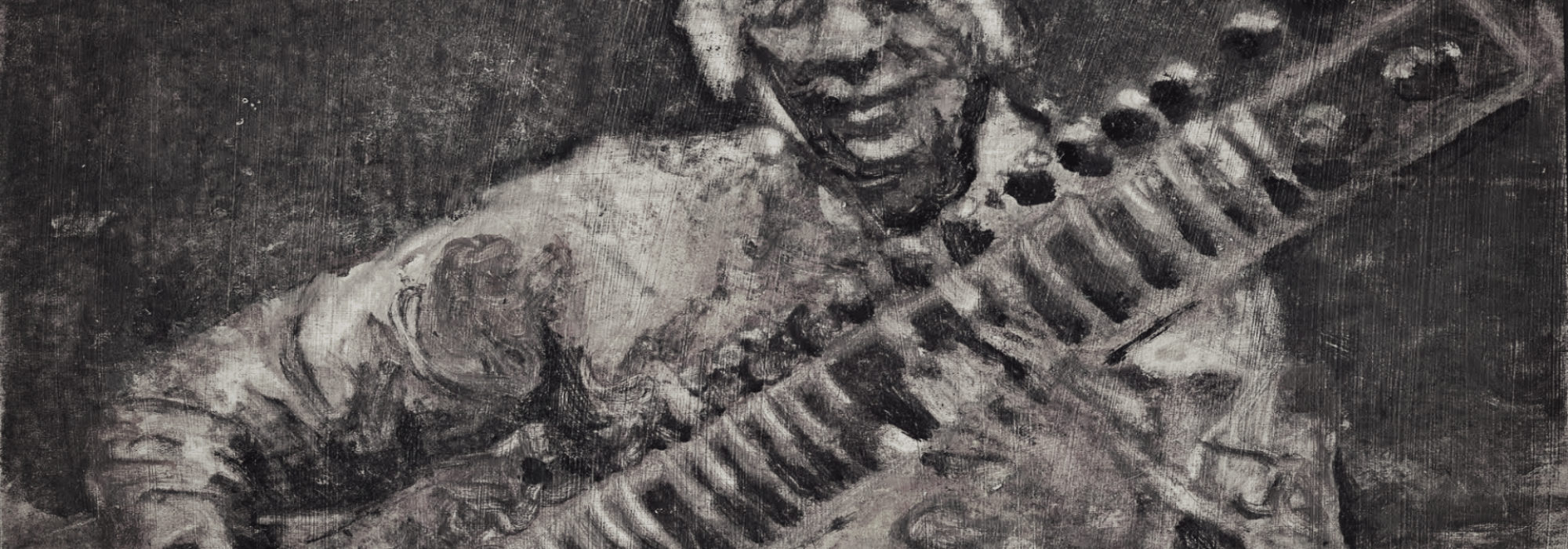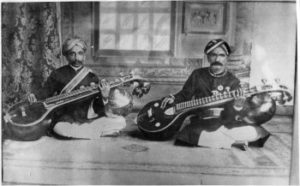I don’t deem it inappropriate to concisely present a collection of my musical experiences over the last sixty to seventy years.
As in the case of so many other disciplines in our lifetime, music too has undergone several changes. Just like the fashion in food and clothing has changed, there has been a change in music. About thirty or forty years ago, Malavalli Sundaramma was singing at a wedding in a friend’s house. The Tyagaraja kriti in Harikambhoji raga, ‘Dinamani vamsha’ was one of the songs she sang. Within half an hour of her finishing the song, a friend of mine came up to me and whispered in my ears, “Make her sing ‘Dinamani vamsha’!” Per my request, she sang the song a second time. About forty-five minutes later, another friend came to me and indicated his interest in listening to ‘Dinamani vamsha.’ When I put forward the request to the singer, she said, “Oh! Didn’t I just sing it a second time!”
I said, “When the listeners are not bored of it, why should the singer get bored? Wouldn’t you have sung it in another concert? It’s just like that!”
She laughed and then sang it a third time.
That was the glamour of ‘Dinamani vamsha’ those days. Today it has fallen out of fashion. Who even sings it nowadays!
Similarly, at one point, during wedding processions, it was extremely common to hear the song ‘Shivadiksha’ in the Kurinji raga. Literally every wedding procession would include that song; that was its popularity. Who even remembers that song today!
The need for self-culture
There are many such instances. Fashion keeps changing. People’s tastes keep changing. Their aesthetic sensibilities also keep changing. A listener should have cultivated, over years of experience, the fine ability to grasp the subtleties of the melody of the song or the raga. If the listener lacks such self-culture (Samskara) then all that he cares for is loud sound. If some sound falls on his ears and strikes his eardrums, he feels it is music.
Therefore both groups must have the necessary Samskara and training to be able to appreciate the finer aspects of music. It isn’t enough if only the singer has it. Cultured listeners of the previous generation were found among all classes of common folk. Traders, zamindars, Vedic traditionalists, government servants – all these groups had listeners with the ability to understand the true worth of good music. I feel that in today’s world, the number of such cultured listeners among the common folk has dwindled.
The method of singing
The earlier generation of singers attached great importance to the practice of singing himkara [a humming, nasal sound] and gumkara [a throaty humming sound]. The note should first emanate in the navel region (nabhi), traverse to the heart region (hrdaya), and finally flow out through the door of the throat (kanta). I have seen [Mysore] Vasudevacharya doing the gumkara practice. Without opening the lips, without moving the hands or legs making funny gestures, and seated in great majesty, he would produce notes (svaras) in different octaves – I have seen and heard this myself. Bidaram Krishnappa too practised the same way. During the days those maestros sang, they would take a pallavi –
man-da-haa-sa
va-da-na ||
In this manner, they sang between each and every syllable in an expansive and relaxed manner. If there was a line with nine syllables, say, – mandahaasanavadana krishna – that was spread over one rhythmic cycle (Avartana), they would take two or three minutes to sing it. That’s the slow tempo (Vilamba gati). The hallmark of an accomplished singer is to sing well in the slow tempo; that indicates one who has attained command over sound.
The flavour (rasa) of music (naada)
I have heard several people mentioning that the slow tempo and expansive singing isn’t to be found today. Like Keats said, “Every syllable must be loaded with the precious ore.” Similarly Vedavyasa said of poetry, “Prati parva rasodayam” – Every parva should be full of rasa [aesthetic beauty] and “Rasah parvani parvani” – Parva after Parva must contain rasa. [Parva is a section/chapter of the Mahabharata; there are 18 main parvas in the epic].
Similarly, in good singing, there should never be a dull moment or an iota of boredom. Between every syllable of the lyric, the flavour of music should always be present, like grape juice. This is possible only by practice, not by mere scholarship of musical texts.
The great maestro Veena Sheshanna had once gone to Madras for a concert. He had camped there for three or four days. One morning, Thirukkodikaval Krishna Iyer [a great violinist] had come to meet him. While the two friends were having a discussion, a third person came there. He was Govindaswami [Malaikkottai Govindaswami Pillai, another well-known violinist]. Krishna Iyer saw Govindaswami and asked him (in Tamil) –
K: “What are you up to these days?”
G: “I’ve been practising.”
K: “Well, then why don’t you play something. Let’s listen to it.”
G: “But I haven’t brought my instrument.”
K: “Well’s here’s a violin. Take it.”
Then he gave Govindaswami the violin-bag that he had been wearing on his shoulder. Krishna Iyer always carried a violin-bag with him, hung on his shoulders. It contained the violin, bow, and the rosin powder for the bow. Whether he was eating or sleeping, his violin would always be with him. Govindaswami took the violin and asked –
G: “What shall I play?”
K: “Play whatever you’ve practiced well.”
Govindaswami played the famous ‘Viriboni’ varnam [in raga Bhairavi] in three speeds. Having heard that, Krishna Iyer said, “Not bad. You are now worthy enough to apply rosin to my bow.”
Govindaswami said, “That is your kindness and grace,” and took leave.
After he left, Sheshanna asked Krishna Iyer, “Well, why did you say such a thing? Is it possible to play better than that?”
Krishna Iyer then took his violin and started playing the same varnam at the tempo of Govindaswami’s third speed, and from there, it is said, he played the varnam in three speeds. [Basically Krishna Iyer took Govindaswami’s third speed as his first speed and played the varnam in three speeds from thereon.]
Sheshanna stood up. “Sir, you are not a human being. You are a demon. Or perhaps a ghost. Does the earthly realm have people who practice like this!”
Vasudevacharya has indicated in his writings that Sheshanna himself was an artist of this calibre. His practice too was of the same standard. Intense to the point of being demonic! He would play every single note and the essence of every note several times; he would play it repeatedly, strumming on the strings, familiarizing himself with every minute detail, and developed a comprehensive understanding. Sheshanna had thus perfected his art.
Dedication in Practice
Krishna Iyer knew his violin inside-out; he knew every millimetre of each of the four strings; how and where the fingers must be placed, how the fingers must move, and how much pressure should be applied to invoke a specific kind of melodic essence and produce specific note – he had mastered it completely.
Even while eating, Krishna Iyer’s mind always thought about the various patterns he could create from the seven notes. And if he hit upon a new melodic idea or a new combination of notes (svaras), he would immediately stop eating, wash his hands, take the violin in his hands, and try out the new pattern of notes with great enthusiasm. Only after clarifying to himself that his idea led to the creation of a beautiful melodic combination would he resume eating. It was only after he could confirm that his musical question was answered would he wash his hands before getting back to eating.
Such was Krishna Iyer’s dedication to practice (Abhyasa nishta).
The incidents I have recounted here were narrated to me by a trustworthy person. Here are but a few examples to demonstrate the penance of art (kalopasana) and the dedication to practice of our old-timers. I am not trying to suggest that all musicians of the past were like Sheshanna or Krishna Iyer. My present intention is merely to indicate the degree of dedication and focus of the old-timers.
(This is the twenty-second essay in D V Gundappa’s magnum-opus Jnapakachitrashaale – Vol. 2 – Kalopasakaru. Translated from the original Kannada by Hari Ravikumar. Translator’s notes in square brackets. Edited by Sandeep Balakrishna.)











































